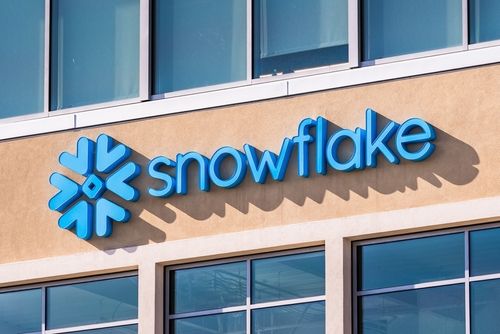
Datadog (NASDAQ: DDOG) and Snowflake (NYSE: SNOW) both help companies optimize their businesses with AI-powered applications. Datadog collects diagnostic data from a wide range of software applications, aggregates that information onto its unified dashboards, then feeds it all to its Bits AI generative AI platform. That process makes it much easier for IT professionals to diagnose software problems.
Snowflake's cloud-based data warehouse is used to collect information from myriad applications, clean up that data, and make it more accessible for third-party analytics applications. Its Cortex AI platform enables its clients to analyze all that data with its AI algorithms and even build their own AI applications.

Image source: Getty Images.
Datadog and Snowflake both saw their stocks set all-time highs during the apex of the growth and meme stock rally in late 2021. However, both stocks lost their luster as their growth cooled off and rising interest rates compressed their valuations. Today, Datadog and Snowflake trade about 36% and 71% below their record highs, respectively. Should you still buy either of these stocks as a long-term play on the booming AI market?
Datadog focuses on profits as growth cools off
Datadog's simplification of IT diagnostics impressed a lot of companies. From 2019 to 2022, its revenue grew at a compound annual growth rate (CAGR) of 67% as its number of large customers -- which generate at least $100,000 in annual recurring revenue (ARR) -- more than tripled. Its dollar-based net retention rate, which gauges its year-over-year growth of ARR, stayed above 130% throughout all of 2022.
But in 2023, Datadog's revenue only grew 27%, its number of large customers rose 15%, and its dollar-based net retention rate had slipped to the mid-110%s by the fourth quarter. It mainly blamed that slowdown on macro headwinds for the enterprise software market, but it also faces stiff competition from similar observability platforms like Cisco's AppDynamics, New Relic, Microsoft's Azure Monitor, and IBM's Instana. But as its revenue growth slowed down, it aggressively reined in its spending and turned profitable on a generally accepted accounting principles (GAAP) basis for the full year.
In the first nine months of 2024, its dollar-based net retention rate stayed in the mid-110%s as its number of large customers grew just 12%. For the full year, it expects revenue to rise 25%. From 2023 to 2026, analysts expect its revenue to grow at a CAGR of 24% as its GAAP net income rises at a CAGR of 96%.
Datadog's business is maturing, but it could still have room to grow as the observability and AI markets expand. With an enterprise value of $39.4 billion, it isn't cheap at 64 times its forward non-GAAP earnings and 12 times next year's sales estimates -- but its insiders have still been net buyers over the past 12 months and that indicates optimism.
Snowflake faces a tougher slowdown with persistent losses
Snowflake's flexible consumption-based pricing and cross-compatibility with a wide range of cloud platforms made it a popular option for companies that didn't want to tether themselves to a single subscription-based cloud provider. From fiscal 2020 to fiscal 2023 (which ended in January 2023), its revenue soared at a CAGR of 98%, its customer base more than tripled, and its trailing-12-month net revenue retention rate only dipped slightly, from 169% to 158%.
But in fiscal 2024, Snowflake's revenue only grew 36%, its number of customers rose 22%, and its net revenue retention rate dropped to 131%. Its retention rate also dropped to 127% at the end of the second quarter of fiscal 2025 (the current fiscal year). Like Datadog, Snowflake mainly blamed that slowdown on macro challenges -- but it also faces stiff competition from similar platforms like Databricks, as well as the integrated warehousing services in leading cloud infrastructure platforms like Microsoft Azure and Amazon Web Services (AWS).
For the full year, Snowflake expects its product revenue (which accounts for most of its top line) to only grow 26%. From fiscal 2024 to fiscal 2027, analysts expect its revenue to rise at a CAGR of 24% as it stays deeply unprofitable on a GAAP basis.
Two other red flags appeared over the past year: Its CEO, Dan Slootman, abruptly retired, and much-followed Berkshire Hathaway liquidated its entire stake. Snowflake's insiders have also been net sellers over the past 12 months.
With an enterprise value of $35.8 billion, Snowflake looks cheaper than Datadog at 8 times next year's sales estimates. But its persistent losses indicate its business model isn't sustainable yet, and it could struggle to keep growing even as AI applications generate tailwinds for the cloud warehousing market.
The better buy: Datadog
Datadog looks pricier than Snowflake. However, its growth is more stable, its profits are soaring, and its co-founder and longtime CEO, Olivier Pomel, is still leading the company. Those clear strengths make it a better buy than Snowflake right now.
* The content presented above, whether from a third party or not, is considered as general advice only. This article should not be construed as containing investment advice, investment recommendations, an offer of or solicitation for any transactions in financial instruments.




